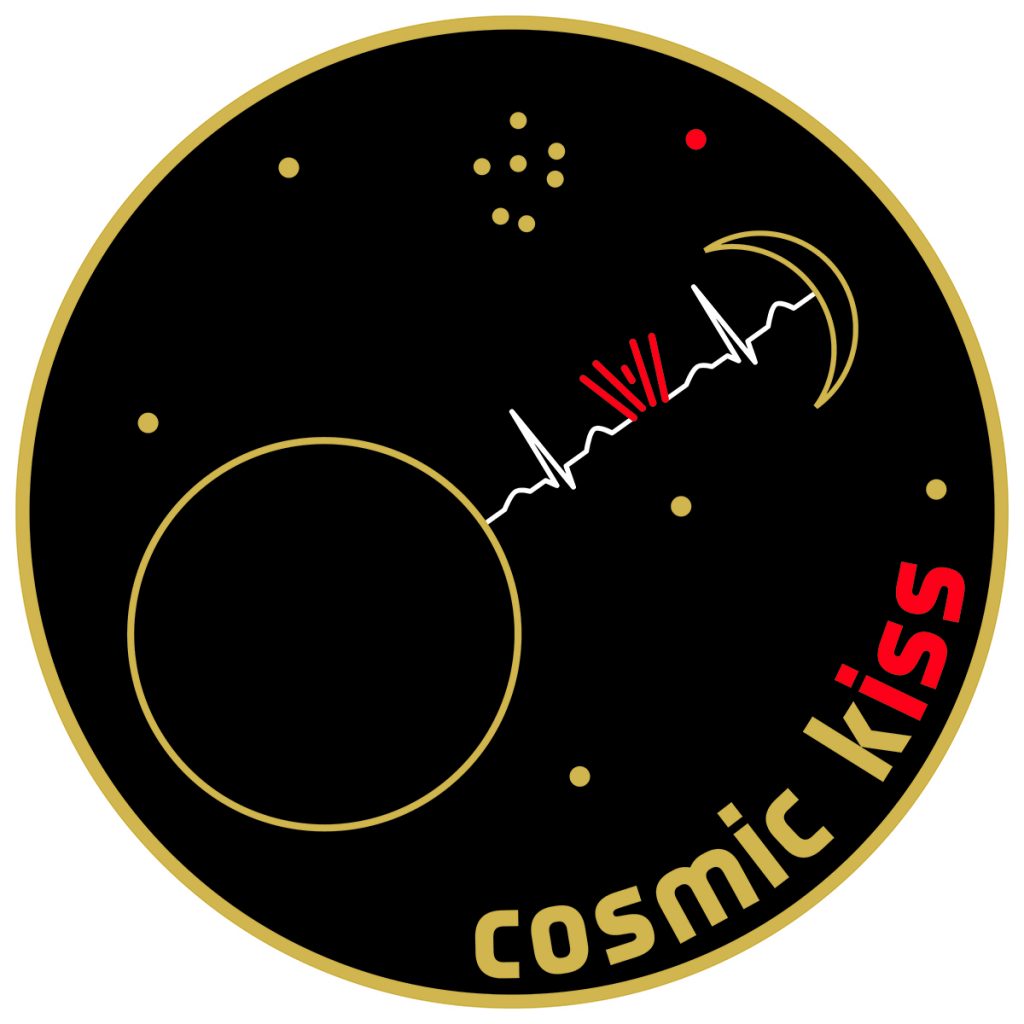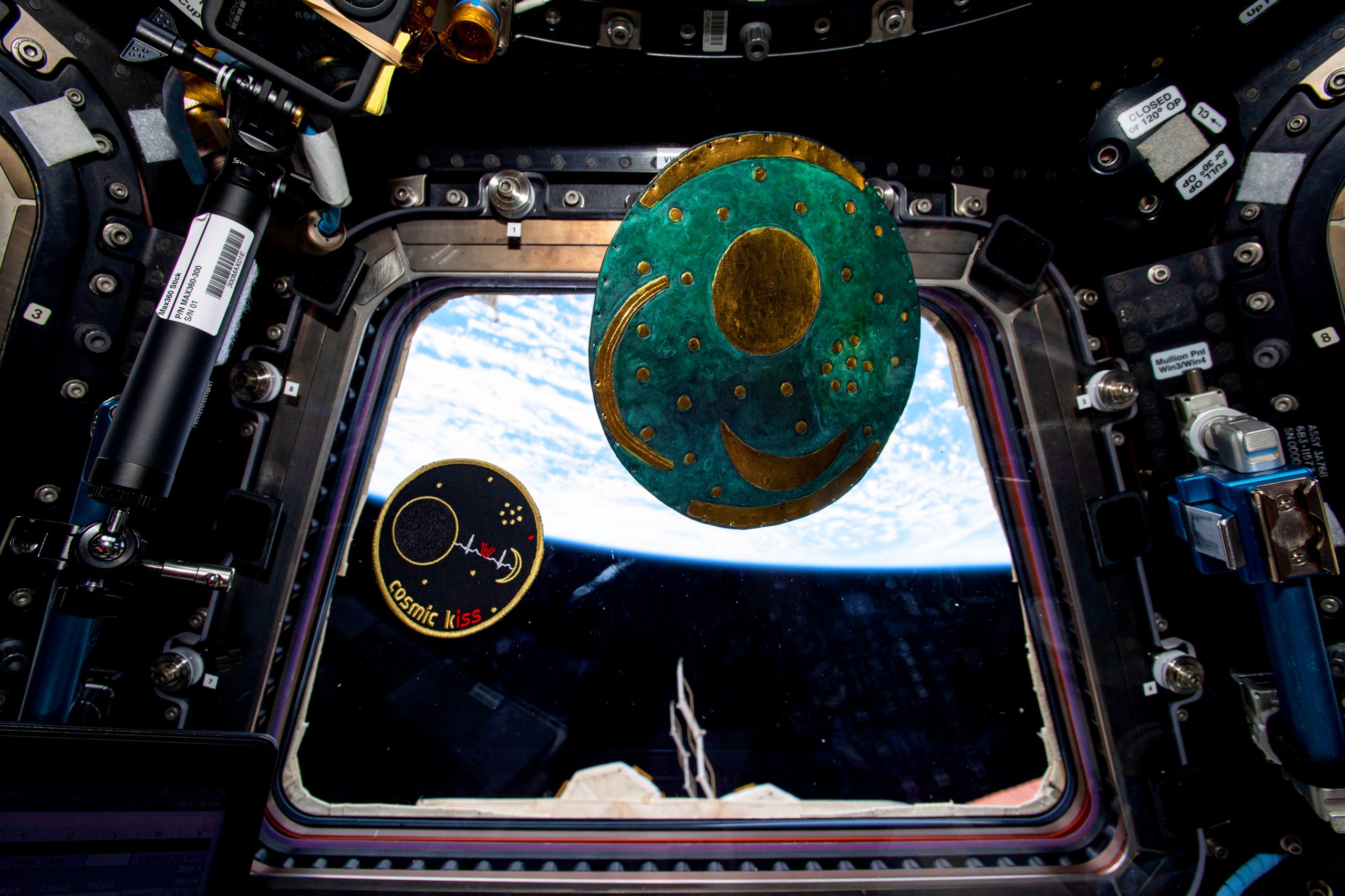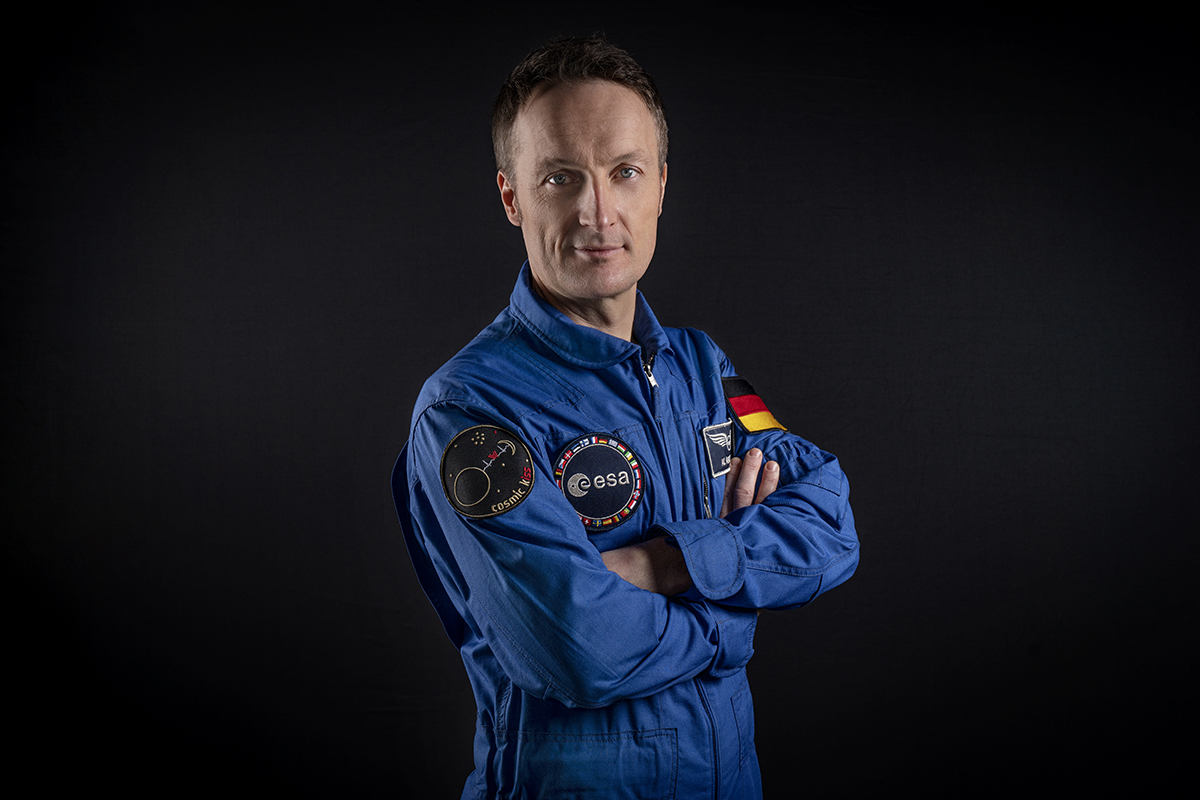Created more than 3600 years ago and unearthed near the town of Nebra in Germany in 1999, the Nebra Sky Disc is considered the world’s oldest representation of concrete celestial phenomena. It is particularly fascinating for the insight it can give us into the knowledge people had at that time about the Sun, Moon and stars and their influence on life on Earth.
Like the Sky Disc, Matthias’s Cosmic Kiss mission patch features several cosmic elements. Together, these elements – along with the mission’s name – convey a love for space, the value of partnership in exploring farther, and the importance of protecting and preserving Earth through space exploration.

Cosmic Kiss mission logo.
The stars as the first calendar
Matthias is accompanied aboard the International Space Station by a replica of the Sky Disc. The original bronze version that weighs around two kilograms and is roughly the size of a record, is housed in the State Museum of Prehistory in Halle (Saale) Germany.
“Artifacts like the Nebra Sky Disc demonstrate a deep fascination for space that has been around for ages. Humans have looked up to the sky since the beginning of time to gather knowledge about the Universe, and we still want to do that today. That’s why I’m delighted to carry this replica with me as a source of inspiration in space,” Matthias explains.
The Disc itself features a golden full and crescent Moon accompanied by several golden stars, including the Pleiades constellation. This depiction of Pleiades carried an important intercalary rule.
Every three years, when the Pleiades was next to a moon matching the thickness of that depicted on the Sky Disc, a leap month was inserted. This compensated for the shifting of the months and important holidays throughout the year.

The Nebra Sky Disc. Credits: State Office for Heritage Management and Archaeology Saxony-Anhalt, Juraj Lipták
International cooperation as the key to success
Modern research reveals that the metals used to make the Disc and the knowledge of its use came from almost all parts of the ancient world. The gold elements added later also suggest the influence of further cultures on the Disc and its last, apparently also mythological, use.
It demonstrates a communication network and international cooperation that was wide-ranging for the time, and which is still crucial for the creation and dissemination of knowledge in today’s space era – with a return to the Moon in sight.

Nebra Sky Disc and Cosmic Kiss mission patch in Cupola. Credits: NASA/ESA-M.Maurer
In preparation for Cosmic Kiss, Matthias trained with international colleagues and teams from partner agencies around the world. In orbit, he supports over 35 German and many more European and international experiments.
The results of these experiments will advance our knowledge and innovation in many fields such as human medicine, material science, physics, Earth observation, technology development and more.

Exchanging samples in the Materials Science Lab (MSL). Credits: NASA/ESA-M.Maurer
The quest for the secrets of the sky continues
Both the Nebra Sky Disc and the Universe still hold undiscovered secrets and state archaeologist Harald Meller says the connection between Matthias’s Cosmic Kiss mission and the Nebra Sky Disc was met with great joy by those at the State Museum of Prehistory in Halle (Saale).
“The fact that Matthias chose the Nebra Sky Disc as an inspiration for his logo and even has it with him in the form of a replica in space is a great tribute to this important finding, as well as to the State Museum of Prehistory Halle, about which I am very pleased,” he says.
“At the same time, it clearly shows what close ties, common goals, longings and questions still connect us today with the people of prehistoric times: the fascination for the stars and the Universe, the quest for knowledge and insight, the question of where we came from and where we are going.
“Through his research into new materials and alloys, which Matthias is conducting on the International Space Station, he is even stepping directly into the tradition of the creator of the Sky Disc who made something fundamentally new and unique from bronze – an alloy of copper and tin, which was still a fairly new material at the time.
“We wish Matthias great success on his mission and look forward to welcoming him to the State Museum upon his return to Earth where we can introduce him to the original Nebra Sky Disc.”

The Nebra Sky Disc in its showcase at the permanent exhibition of the State Museum of Prehistory in Halle. Credits: State Office for Heritage Management and Archaeology Saxony-Anhalt, Juraj Lipták.



